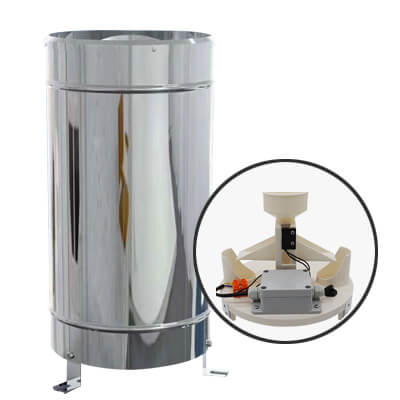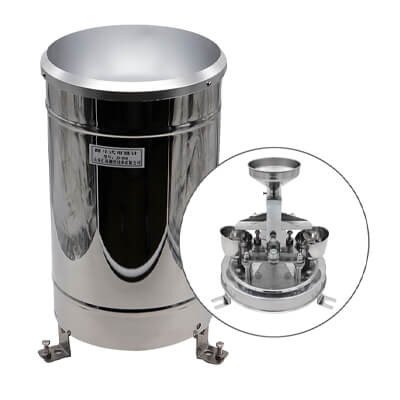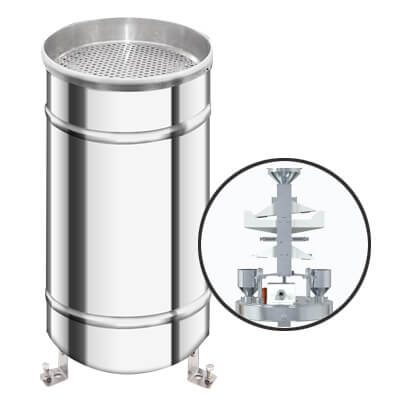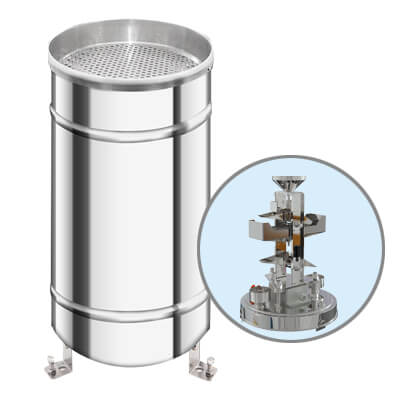What does a Rain Gauge Measure and How it Use?
Due to the strong regional and diurnal variation of rainfall, accurate measurement of rainfall has been difficult to achieve in
The stainless steel rain gauge is recognized to be the standard for measuring rainfall and other precipitation in hydrological and environmental testing. The internal tipping bucket structure provides high accuracy in various rainfall intensity ranges. According to different materials, we have three types of tipping bucket rain gauge: all stainless steel rain gauge, semi-stainless steel rain gauge, and ABS plastic rain gauge.
Renke is a professional manufacturer of environmental monitoring sensors with more than 15 years of production and sales experience. Our rain gauge have many types, wholesale prices and good quality. It can be widely used in agricultural irrigation, precipitation measurement, water level monitoring of water treatment plants, weather stations, and Internet of Things rainfall.
Tipping bucket material: ABS plastic
Accuracy: ≤±7%
Resolution: 0.5mm
Height: 260mm
Rain-bearing mouth material: ABS plastic
Output: RS485/0-5V/0-10V/4-20mA/Pulse

Tipping bucket material: ABS plastic
Accuracy: ≤±3%
Resolution: 0.2mm or 0.5mm
Height: 330mm
Rain-bearing mouth material: ABS plastic
Output: RS485/0-5V/0-10V/4-20mA/Pulse

Tipping bucket material: stainless steel
Accuracy: ≤±3%
Resolution: 0.2mm or 0.5mm
Height: 330mm
Rain-bearing mouth material: 304 stainless steel
Output: RS485/0-5V/0-10V/4-20mA/Pulse

Double tipping bucket material: ABS plastic
Accuracy: ≤±2% (can be customized ≤±1%)
Resolution: 0.1mm or 0.2mm
Height: 400mm
Rain-bearing mouth material: 304 stainless steel
Output: RS485/0-5V/0-10V/4-20mA/Pulse

Double tipping bucket material: stainless steel
Accuracy: ≤±2% (can be customized ≤±1%)
Resolution: 0.1mm or 0.2mm
Height: 400mm
Rain-bearing mouth material: 304 stainless steel
Output: RS485/0-5V/0-10V/4-20mA/Pulse
Rain sensing diameter: 6cm
Resolution: standard 0.1mm
Typical accuracy: ±4%¹
Max. instantaneous rainfall: 24mm/min
Power supply: 9~30V DC
Power consumption: <0.24W
Output signal: RS485/Pulse
Rain bearing diameter: φ200mm
The sharp angle of cutting edge: 40°~45°
Rain intensity range: 0mm~4mm/min (allowable maximum rain intensity 8mm/min)
Power supply range: 4.5~30V
Maximum power consumption: 0.24W
Working temperature: 0~50℃
Working humidity: <95%(40℃)
The tipping bucket rain gauge working principle is counting the number of times the tipping bucket falls. The tipping bucket is made of stainless steel and divided into two half-cone chambers with equal volume by a partition in the middle. It is a mechanical bistable structure. When one chamber receives water, the other chamber is waiting. When it rains, the rainwater collected by the water receiving port enters the metering bucket through the funnel. When the volume of the received rainwater reaches the predetermined value of 0.2mm, the chamber will overturn due to gravity and be waiting, and the other chamber will be in a state of receiving water. When the water receiving volume reaches the predetermined value, the bucket will overturn again and be waiting. Magnetic steel is installed on the sidewall of the tipping bucket, which scans from the side of the dry reed tube when the tipping bucket flips to make the dry reed tube on and off. That is, every time the tipping bucket is overturned, the dry reed tube will be switched on and send out a pulse or 485 signal. This is the working principle of the stainless steel tipping bucket rain gauge.
The tipping bucket of the rain gauge is equipped with constant magnetic steel, and the reed tube bracket is equipped with a reed tube. When the instrument leaves the factory, both the magnetic steel and the reed tube have been adjusted at the appropriate coupling distance, so that the output signal of the instrument and the number of flipping bucket flips are determined.
When the rain gauge leaves the factory, the tipping bucket inclination adjustment screw has been locked at the best inclination base point position and the inclination screw has been sealed with red paint. When installing the instrument on-site, the user only needs to level the entire instrument according to the relevant requirements of this manual. The bubble can be put into use after adjusting it to the center position, and there is no need to adjust the tilt angle of the bucket on site.
Buy the best tipping bucket rain gauge, contact us. Renke is a R & D factory for more than 10 years. Many types are available. Meet your various requirements. Precision manufacturing process. Accurate measurement. Shipped the same day.
In order to protect the patented technical parameters, please contact us for instructions.
Renke all stainless steel tipping bucket rain gauge is composed of rain port, filter screen, water diversion funnel, tipping bucket bracket, tipping bucket, tipping bucket sleeve, inclination adjustment device, level adjustment device, constant magnet steel, reed pipe, a signal output terminal, drainage funnel, base, Stainless steel cylinder, base supporting feet, water diversion bucket filter screen, etc. Among them, the tipping bucket bracket is provided with a tipping bucket shaft sleeve, a round horizontal bubble, a reed tube bracket, and a signal output terminal.
The tipping bucket sleeve of the rain gauge is an integrated rotating positioning structure.
The tipping bucket is installed in the bearings of the two sleeves through the tipping bucket shaft, which makes the assembly and disassembly of the tipping bucket more convenient, and there is no need to adjust the distance between the two sleeves. , Brings convenience to on-site installation.
Due to the strong regional and diurnal variation of rainfall, accurate measurement of rainfall has been difficult to achieve in
The weather sensors are the sensing end of the weather station and collect various weather-related data. The weather station can
A greenhouse is a closed environment that provides optimal conditions for plant growth and promotes plant growth by controlling indoor
Table of Contents What is IoT? IoT is the “Internet of things“. It is an extended and expanded network based
The weather station can provide users with comprehensive weather information over the years. Regular maintenance of weather stations is an
What is a tipping bucket rain gauge? A tipping bucket rain gauge is one of the most standard sensor used
A complete set of a weather station is composed of two parts: hardware and software. The hardware part includes various
Table of Contents Do you know where to mount weather station? The weather station should be installed as far as
Rain gauge is a professional instrument for measuring precipitation in a certain area over a period of time. The more
At present, tipping bucket rain gauges, siphon rain gauges, ultrasonic rain gauges, etc. are more common in meteorological monitoring. They